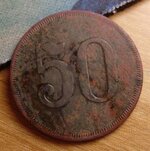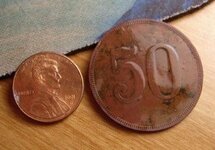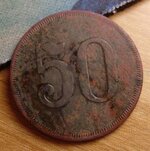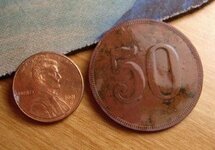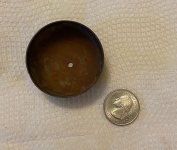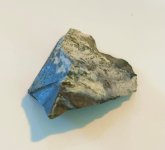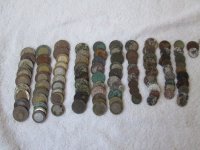kenbaker329
Tenderfoot
has 50 stamped on both sides, appears to be copper of bronze, not sure. edges of the coin are purferated, in was found in area that has given up mostly 1988 - 1910 coins. this was about 8 inches deep. sandy/gravel fairly firm. anyone know what it is. NO OTHER MARKINGS EXCEPT THE 50 AND EDGES OF COIN ON BOTH SIDES.


